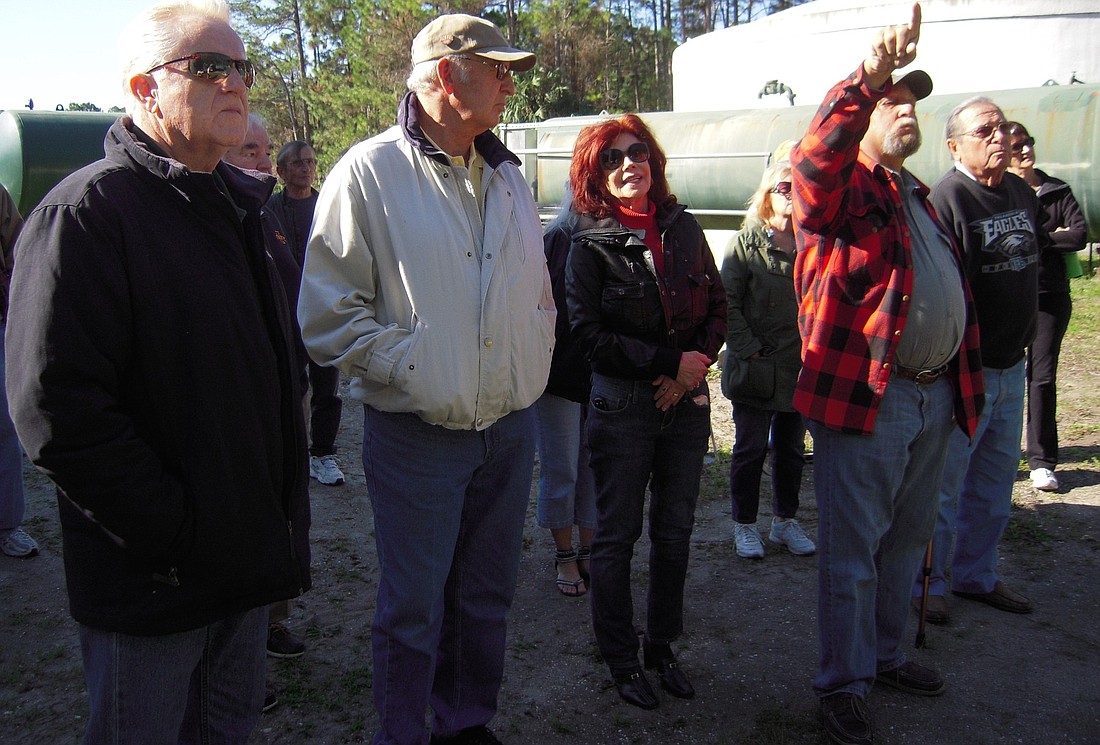- February 24, 2025

Two of the four wells that serve Plantation Bay are ailing, and the county hopes test results due in about two weeks will tell them what’s wrong.
The Plantation Bay area’s water, often brown, green, or yellow, has shown unacceptably high levels of chemicals called trihalomethanes and haloacetic acids in state tests, unnerving residents.
“For many years I spoke to my patients about the importance of drinking good quality water,” Allen Axenfield, secretary of the Bay Point Homeowners Association, told commissioners at a Monday, Feb. 16 County Commission meeting. “It’s a sad case that I’ve now moved to a location where apparently, from what I understand, the water is way below standard. … The water has got to be improved, because once people start to become ill and it’s linked to the poor water, it’s going to precipitate a whole other series of problems for many, many people.”
Plantation Bay resident Helen Siegel said her daughter worked at the local Publix, where bottled water flies off the shelves.
“It isn’t a matter of just aesthetics,” she said. “A lot of people are installing these very expensive water filtration systems. Our monthly rates have doubled, and the water is no better than it was 17 months ago when this body, along with the city of Bunnell, voted to approve the sale from our developer. … It’s time for some accountability.”
The county, along with the city of Bunnell, bought the private Plantation Bay utility in 2013 for $5.5 million, but the county has since struggled to break off from Bunnell and manage the water utility on its own.
The process has been tied up with paperwork. “It is held up with the city of Bunnell right now till they can get their financial records in order for us to take over the system,” County Administrator Craig Coffey said at the meeting. “They are willing to give it to us; we are willing to take it.” For now, Bunnell runs the facility.
Coffey said the problem with the water stems from organics and a by-product of the chlorination process.
“The quality of the well water coming into the system is the number one issue — it has a lot of organics,” he said. “The organics cause two major problems that all of the homeowners are experiencing: One is the color of the water, coloration, sometimes smell; the second issue is with regard to the byproduct, called trihalomethanes and the halocytic acid.”
The county drilled a four-inch test well to determine the source of the problem.
“If those tests come back and we can’t rehab (the wells) or fix the casing, then we’re getting into new wells, and we’re getting into a whole new area of cost that we did not budget for,” Coffey said.
Rehabbing the wells, he said, would take three to six months and cost about $250,000. Building news wells would cost more, and if the county has to replace the utility’s treatment train, that could cost up to about $3 million, which the county would seek grant money for, Coffey said.
A new treatment train would likely use a reverse osmosis or ion exchange system, Coffey said, and county staff have planned meetings with consultants to review those options.
Plantation Bay resident Pat Murray urged the county not to seek cheap, easy solutions.
“I’d rather you bite the bullet, even if we have to pay more — get something that’s going to work long-term,” she said. “If it has to cost more, it’s worth it, because our children and our elderly are the ones that will benefit.”